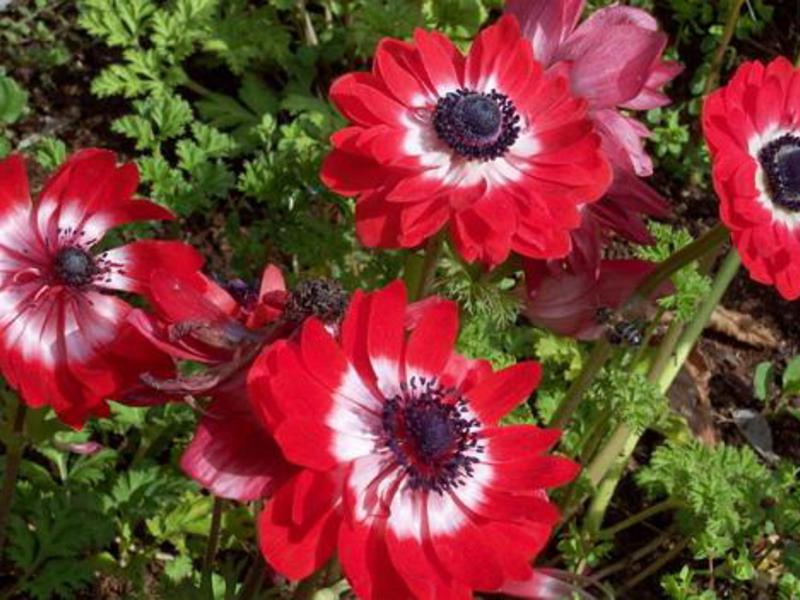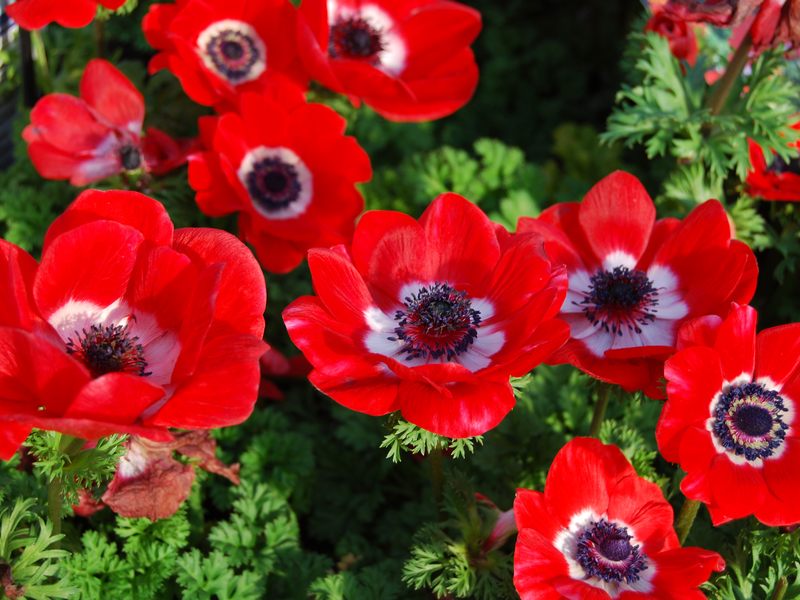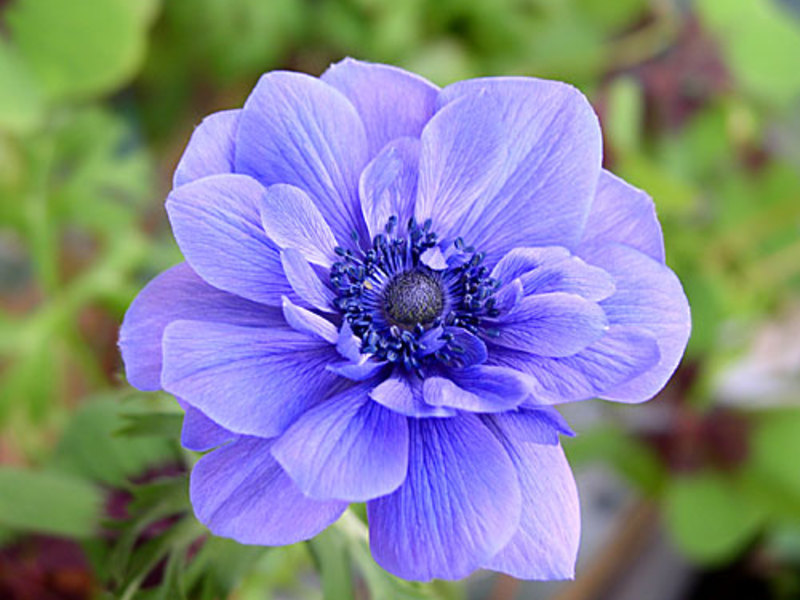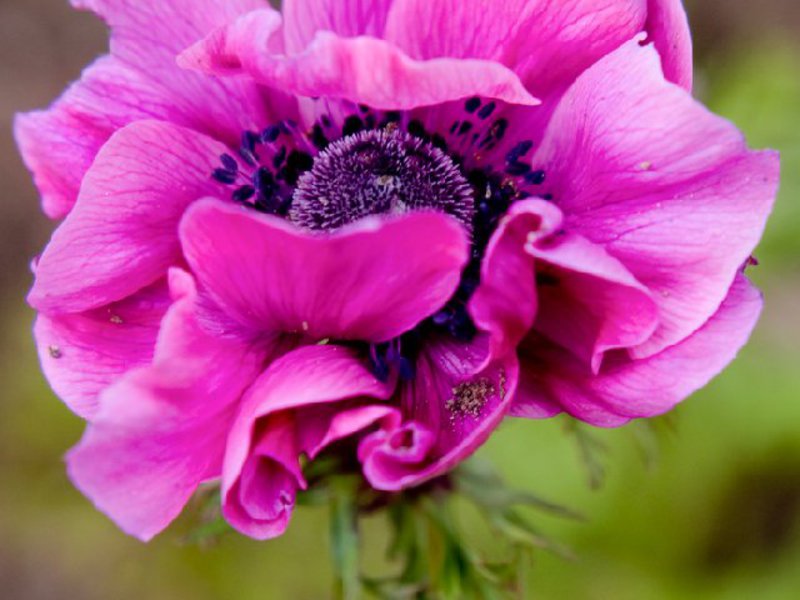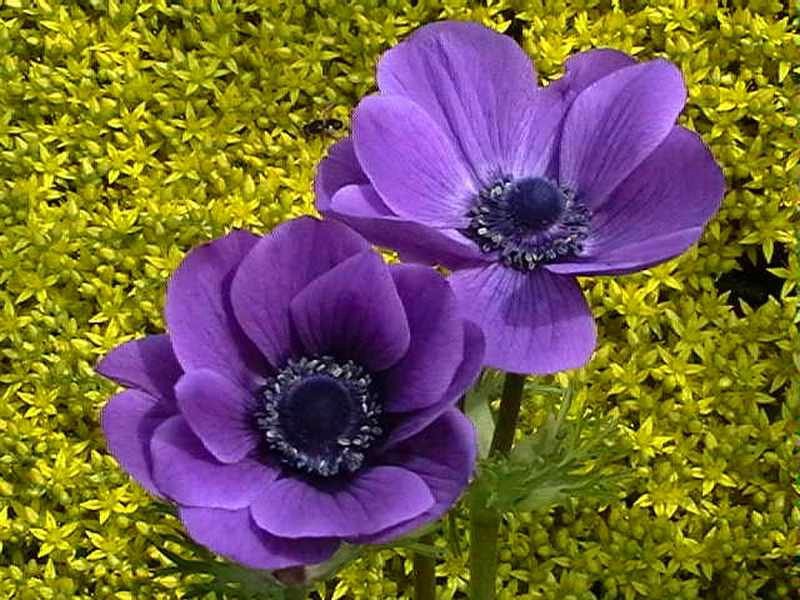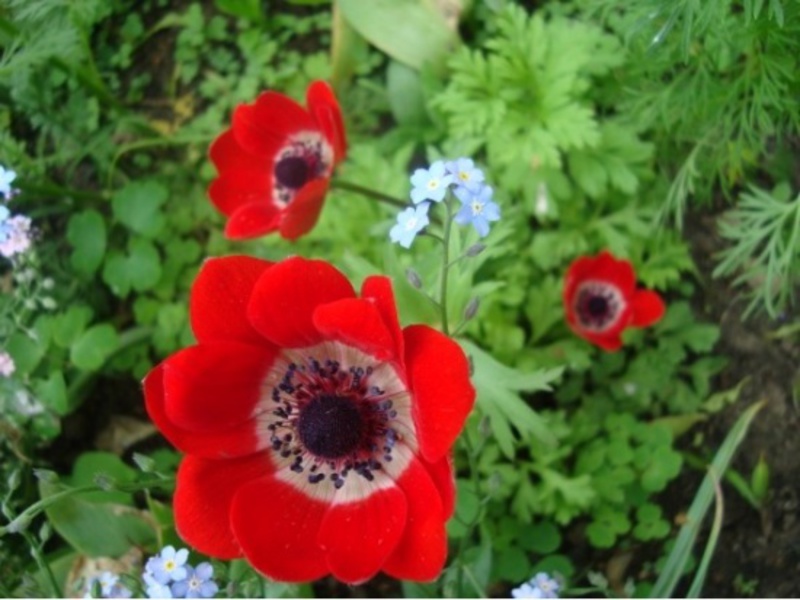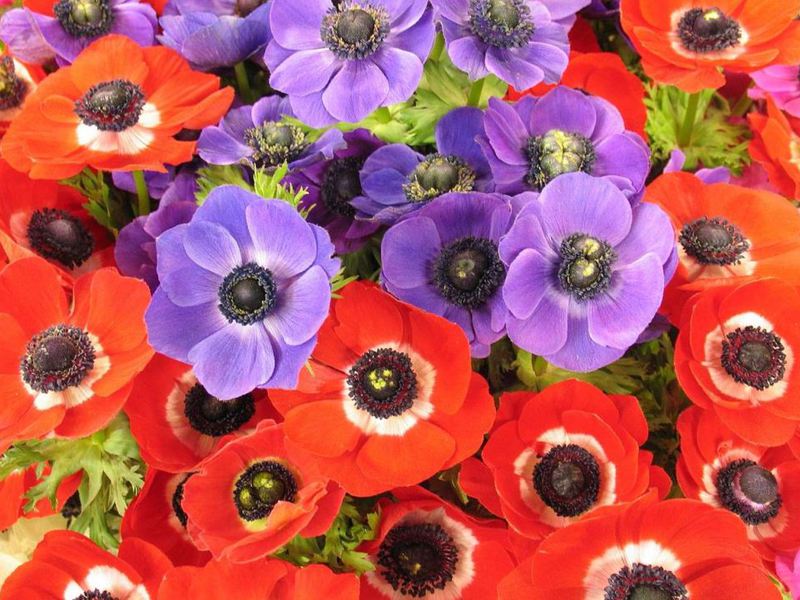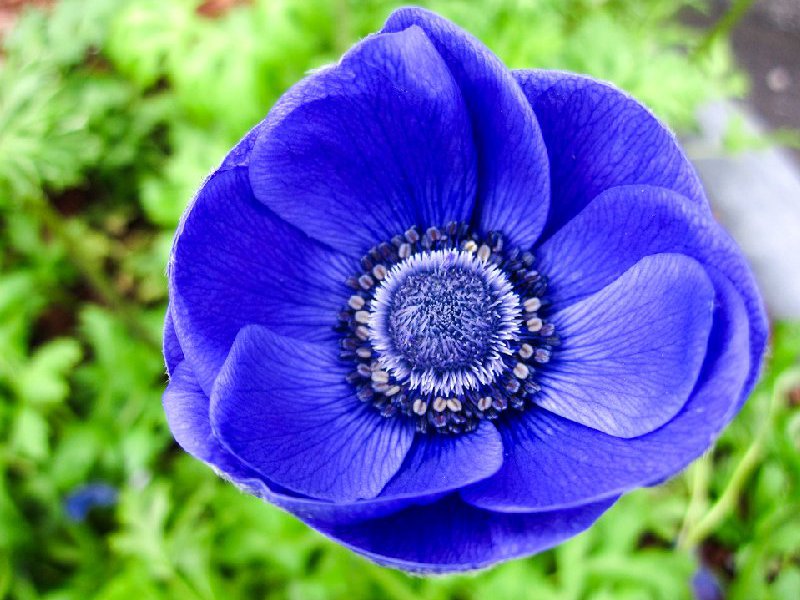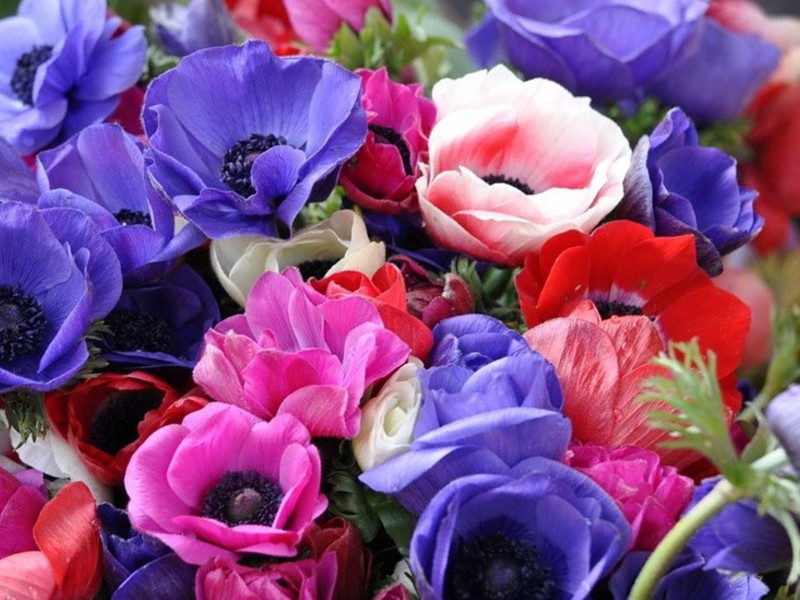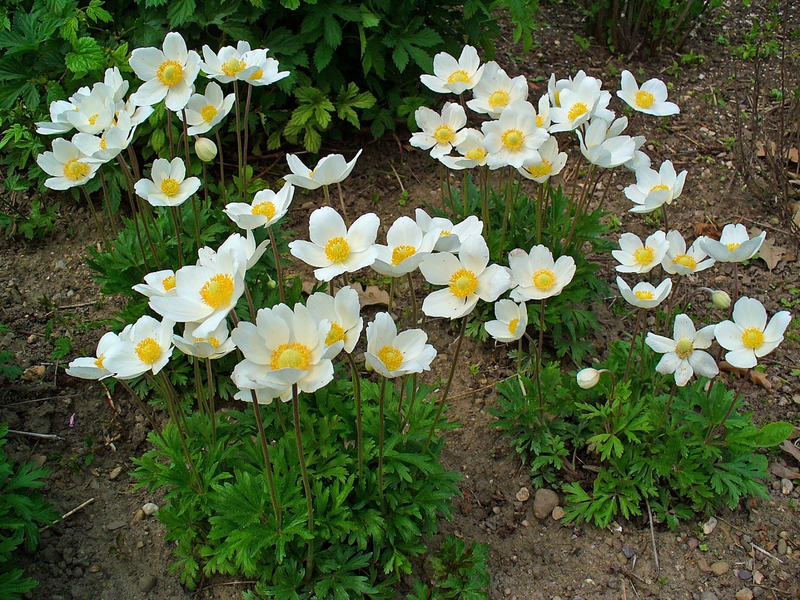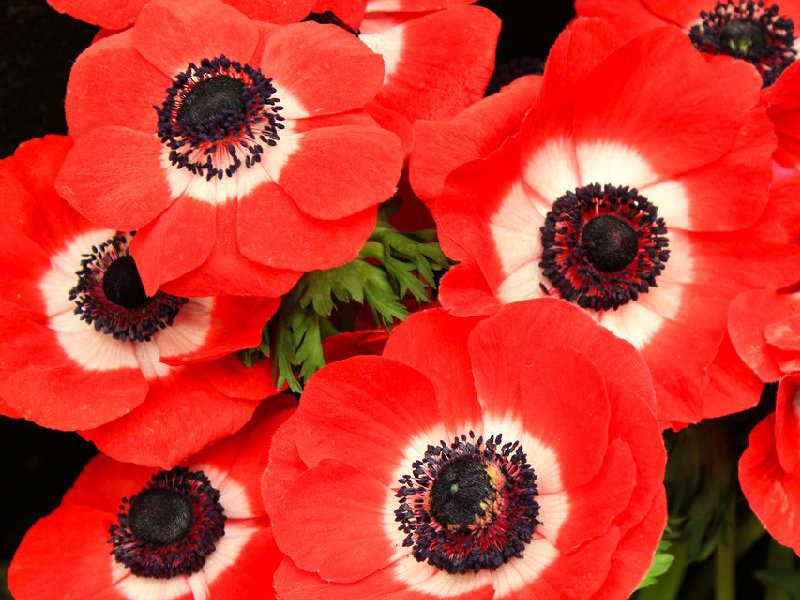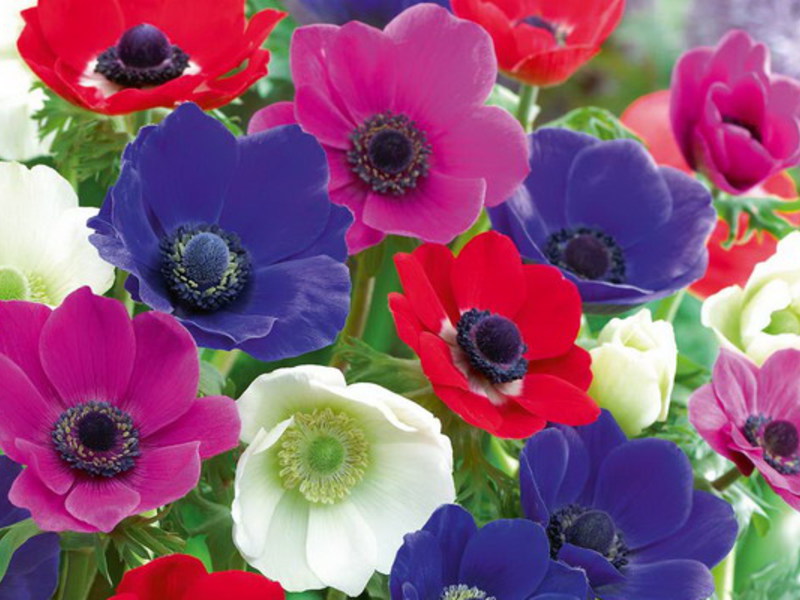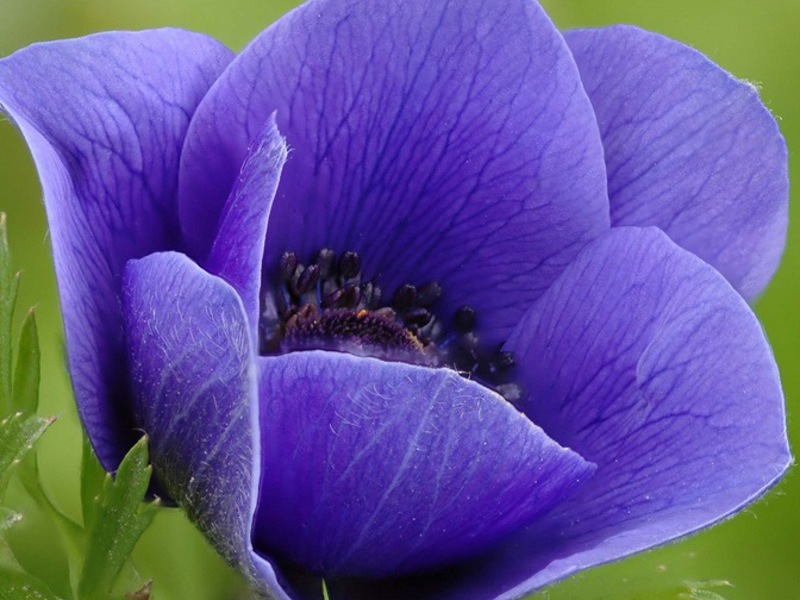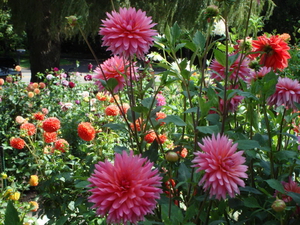Anemone is a frequent inhabitant of the plots of most of our flower growers. To many, this plant, representing the buttercup family, is known as the "daughter of the winds", which she received from the ancient Greeks. By its external features, this perennial plant is very similar to a poppy.
In our country, the most widespread are low-growing varieties, reaching a height of 30 cm. Although tall species are represented in the genus of anemones, the well-known one, however, in our climate they are very rare. The total number of anemone species numbers more than 150 varieties, which differ in flowering time... This feature allows you to create a beautiful flower bed on their basis, which can be admired during the entire summer season.
Due to the great diversity in the genus of anemones, there are individual species that do not create much trouble in care. Along with them, there are also such plants that are incredibly difficult to grow even with careful care. The main reason for these differences is associated with the structural features of the root system. Some varieties form tubers, while others form rhizomes. However, it is the latter that are most preferable due to their ease of care. Therefore, it is worth getting the first experience of growing anemone from these species. Varieties that form tubers during the growing season require special attention, otherwise you can not count on the flowering of the anemone.
Content
Planting and care in the open field: photos, planting secrets
During preparation for growing anemone, the main thing that needs to be understood is that throughout the entire life cycle, the plant needs provide appropriate care, which provides for compliance with some rules:
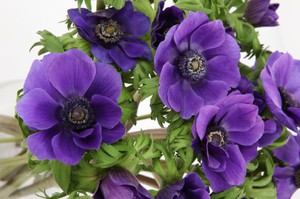 Regular watering is mandatory for anemones, and in dry and hot weather they should be very abundant.
Regular watering is mandatory for anemones, and in dry and hot weather they should be very abundant.- During the entire time of development, the plants must be fed: in the fall, complex mineral fertilizers are applied to the soil, and in the flowering phase and immediately before planting - organic.
- Frost resistance is not included in the list of anemone's advantages, therefore, for a successful wintering, it needs a shelter from dry foliage.
- The most favorable moment for breeding anemones occurs in spring. It can be bred in several ways: with the help of root suckers or seedlings grown from seeds.
Due to the large species diversity, each type of anemones uses its own cultivation technique. It is especially worth highlighting the spring varieties that usually called ephemeroids... Their main feature is a short flowering cycle. They come out of dormancy in April, and at the beginning of May they open their first flowers. However, in July they fall asleep again. But if you create favorable conditions for the development of plants, then they can preserve foliage until autumn.When the last flowers of spring anemones wither, you can transplant them, since after that they begin to grow strongly.
Transplanting of anemone with rhizomes can be carried out in the spring, when the snow has completely melted, or in October. But first, the rhizomes must be kept in warm water for some time. During planting, they are buried 10 cm, no more.
Buttercup and oak anemone belong to the group of plants that thrive in shade conditions. Therefore, the most suitable for planting them would be a site under trees or near the walls of buildings that can provide protection from sun and wind.
Crowned and tender anemones thrive in bright areas, but they must be protected from direct sunlight. During the care of the crown anemone, it is necessary to provide moderate watering, and it is imperative to focus on the condition of the soil, which must have time to dry out. If the water starts to stagnate, then soon the roots of the crown anemone will rot. It is undesirable to plant an anemone next to bushes.
How to prepare the soil?
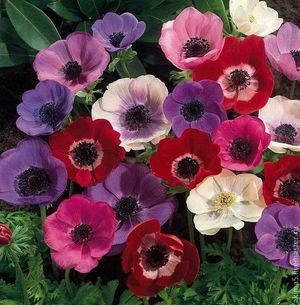 Even before planting an anemone, it is necessary decide on a suitable place and prepare the ground accordingly. It is recommended to choose a spacious area in the shade for this flower, where the plant will not be afraid of either wind or drafts, since these factors do not contribute to the normal development of the anemone. Considering that the anemone demonstrates rapid growth during the season and gains green mass in a short time, but at the same time has a rather fragile root system, a place for it should be chosen where it will not come into contact with anything.
Even before planting an anemone, it is necessary decide on a suitable place and prepare the ground accordingly. It is recommended to choose a spacious area in the shade for this flower, where the plant will not be afraid of either wind or drafts, since these factors do not contribute to the normal development of the anemone. Considering that the anemone demonstrates rapid growth during the season and gains green mass in a short time, but at the same time has a rather fragile root system, a place for it should be chosen where it will not come into contact with anything.
The same should be followed when choosing a site where loose and well-drained soil should be present. The most suitable for growing anemones is deciduous-peat or loamy soil. However, it is possible to artificially improve the composition of the soil by adding sand to it. The problem of increased acidity can be solved by adding wood ash or dolomite flour to the soil.
How to prepare seeds?
When the main activities for the preparation of the site are completed, they move on to the seeds. It should be mentioned right away that anemone seeds have low germination... Therefore, if you plan to sow seeds harvested last year, then a maximum of 25% of them will hatch. However, there are certain techniques with which you can increase germination. The desired result can be achieved by exposing the seeds to cold for one to two months. Experienced gardeners know this exercise as stratification.
- for this you need to add a small amount of sand or peat to the seeds of the anemone, observing the proportions of 1: 3;
- then the mixture must be sprayed with water and continue to be kept moist until the seeds swell;
- placing flower seeds in a suitable container, add a small amount of substrate there, then mix everything and moisten a little again;
- then the seeds are transferred to a ventilated room, where the temperature is maintained at no higher than 5 degrees Celsius. They must remain in it until the shoots appear;
- when the seeds hatch, the container is transferred to the street, where they are buried in snow or ground. To protect from the winter cold, the place where the seeds were buried must be covered with sawdust or straw on top;
- in the first weeks of spring, the plants are transplanted into boxes.
However, it is possible to prepare the seeds of anemone flowers for sowing in an easier way: for this need boxes with earth, into which seeds are sown, after which these containers are buried in the area. As a result, being outdoors during the winter, the effect of natural stratification will be provided. With the onset of spring, all that remains is to remove the box and transplant flowers.
How to prepare tubers?
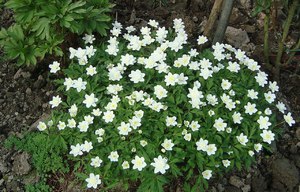 Before planting flowers of an anemone with tubers, it is necessary to bring it out of dormancy. This will require a container into which warm water is poured, and then the tubers are placed there for a couple of hours. At the first signs of swelling, flowers are transplanted into pots pre-filled with a sand-peat mixture. It is necessary to deepen the tubers no more than 5 cm.When this operation is performed, it is necessary to ensure that the soil remains moist all the time.
Before planting flowers of an anemone with tubers, it is necessary to bring it out of dormancy. This will require a container into which warm water is poured, and then the tubers are placed there for a couple of hours. At the first signs of swelling, flowers are transplanted into pots pre-filled with a sand-peat mixture. It is necessary to deepen the tubers no more than 5 cm.When this operation is performed, it is necessary to ensure that the soil remains moist all the time.
You can also suggest another method of preparing anemone tubers for planting.
- you need to take a cloth, moisten it in Epin's solution, and then place the roots in it;
- then it is wrapped in a plastic bag and left for five to six hours;
- after the specified time, you can transplant into pots.
How to plant tubers?
When growing flowers of anemone with tubers, the main thing is to correctly determine the growth point. To do this, you must carefully examine the tuber - the upper part should have a flat surface, and the lower one should be pointed. If pre-sowing measures were carried out in relation to the tubers and they managed to swell, then they tubercles of the kidneys will be present... Sometimes it is difficult to determine the shape of the tuber, in which case they need to be placed sideways when planting.
Then a hole is prepared for sowing: its diameter should be 40 cm, and its depth should be about 15 cm. First, you need to pour two handfuls of a mixture of ash and humus on the bottom. After that, the tuber is placed there, and on top it is covered with earth and lightly tamped. Finally, you need to moisten the soil.
Disembarkation rules
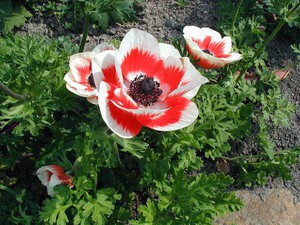 It is possible to plant anemone seedlings in pots only when a favorable moment comes. It can be determined by the fact that the seedlings have formed two true leaves. Haste with a transplant will not benefit the anemone, since in the future you will have to pay more attention to it during leaving. During the planting of flowers in the fall, they need protection from cold weather from fallen leaves or hay. When growing anemone flowers from seeds, you will have to stock up on a lot of patience, since the first flowers will appear only in 3-4 years.
It is possible to plant anemone seedlings in pots only when a favorable moment comes. It can be determined by the fact that the seedlings have formed two true leaves. Haste with a transplant will not benefit the anemone, since in the future you will have to pay more attention to it during leaving. During the planting of flowers in the fall, they need protection from cold weather from fallen leaves or hay. When growing anemone flowers from seeds, you will have to stock up on a lot of patience, since the first flowers will appear only in 3-4 years.
If it is necessary to ensure the flowering of anemones throughout the season, then you should be very careful when choosing varieties. They must differ in flowering time, and they must be planted at the right time.
How to properly care for an anemone?
After the planting of anemone flowers is completed, they begin to care for it. Particular attention must be paid to soil moisture. Watering should be moderate, since when water stagnates roots start to rot... The plant will not feel well if it does not receive enough moisture, since it will not have the strength for normal growth. In some cases, plants will not be able to set buds at all. You can ensure the optimal level of soil moisture if you plant flowers on a hill and provide high-quality drainage. Mulching the soil has a positive effect. Peat or leaves of fruit trees can be used as material. The mulch itself is laid on the soil in the root zone with a layer of 5 cm.
In spring, the need for moisture in flowers is low, so you can limit yourself to watering once a week. A similar irrigation regime is provided in summer, provided that the weather is cool. In hot weather, anemone should be watered every day before sunrise or after sunset.
At the beginning of the mass flowering, the anemone will consume a lot of energy, so it will have to be provided with top dressing. However, it is undesirable to use fresh manure for these purposes. In autumn, feeding is carried out with complex mineral fertilizers. In those cases, if fertilizers were applied to the soil before planting the seeds, fertilizing is not required.
Conclusion
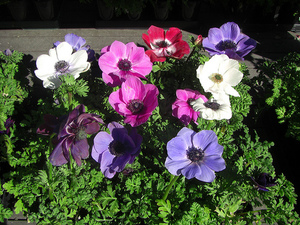 Anemone is widespread in our country, so many of our gardeners are well acquainted with its decorative properties, as well as the peculiarities of cultivation and care. However, a beautiful photo of anemone flowers does not mean that it will be easy to grow it. Here there are certain nuances, on which the success of this event largely depends. When growing anemones outdoors, it is important not only to find a suitable site that should correspond to the variety of anemones, but also to provide appropriate care.
Anemone is widespread in our country, so many of our gardeners are well acquainted with its decorative properties, as well as the peculiarities of cultivation and care. However, a beautiful photo of anemone flowers does not mean that it will be easy to grow it. Here there are certain nuances, on which the success of this event largely depends. When growing anemones outdoors, it is important not only to find a suitable site that should correspond to the variety of anemones, but also to provide appropriate care.
First of all, this concerns watering, which must be regular. If the flowers are watered with long pauses, subsequently compensating for them with an increased consumption of moisture, then this will not benefit the anemone, since excess water will cause root rot. Because of this, it can not only stop blooming, but also die.
